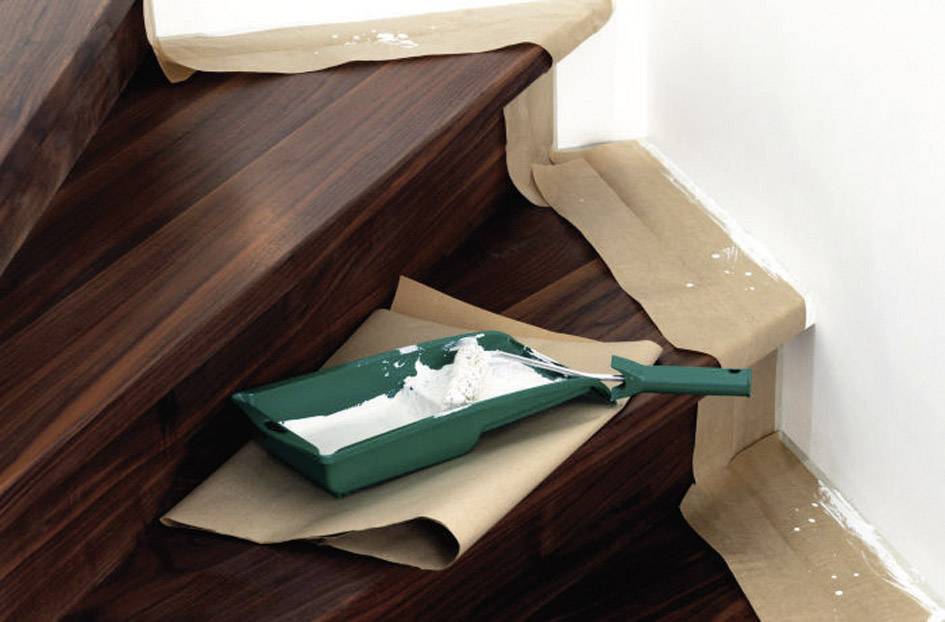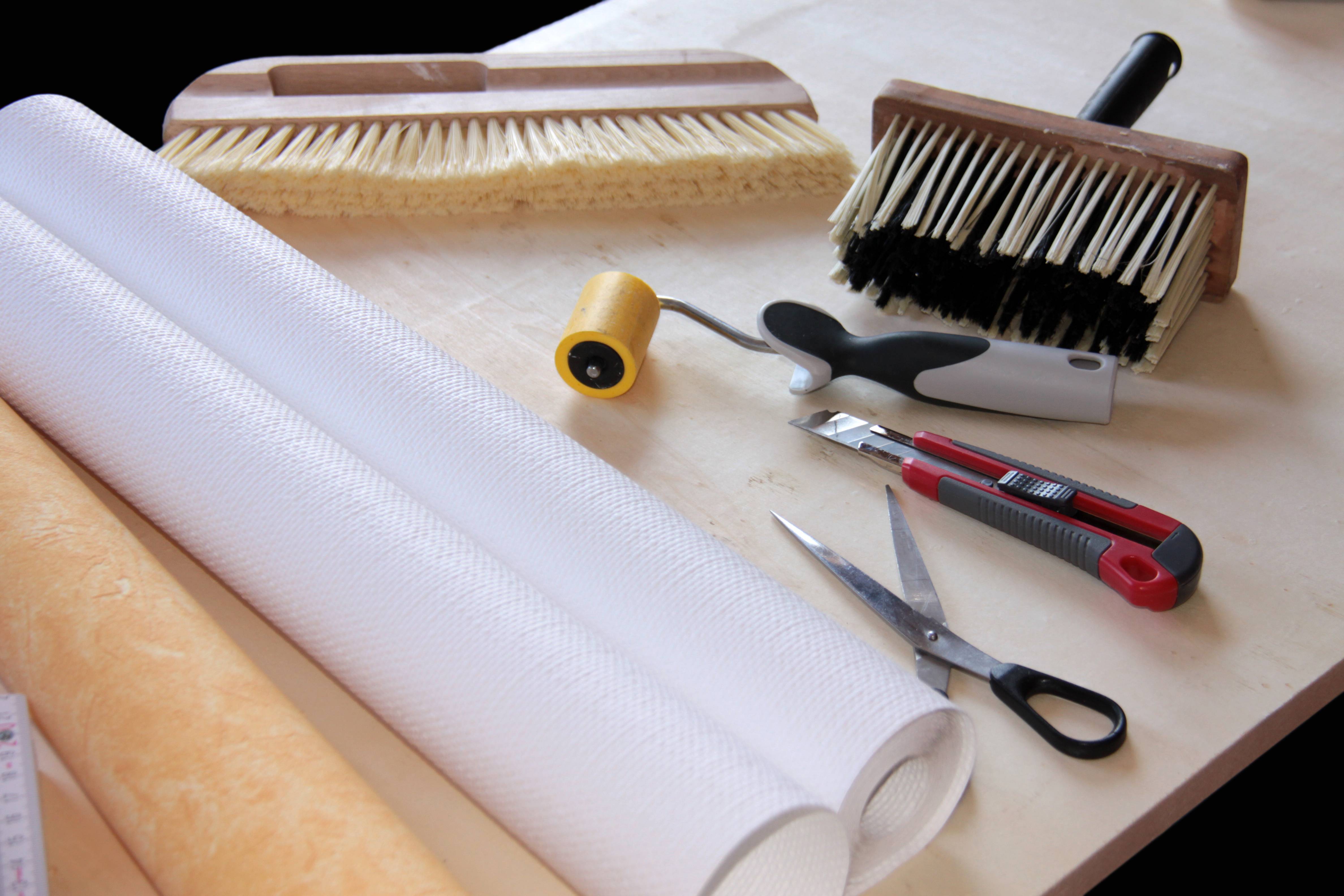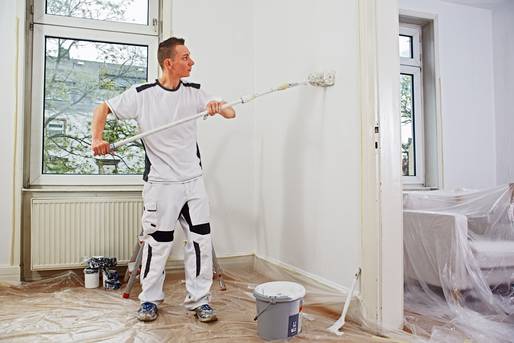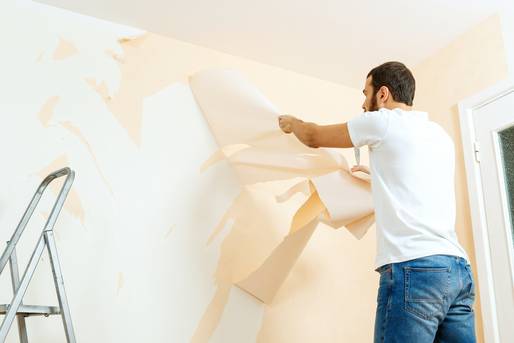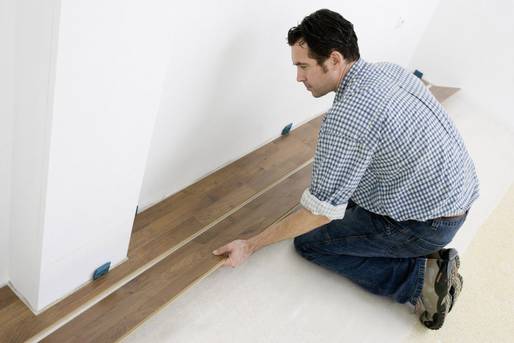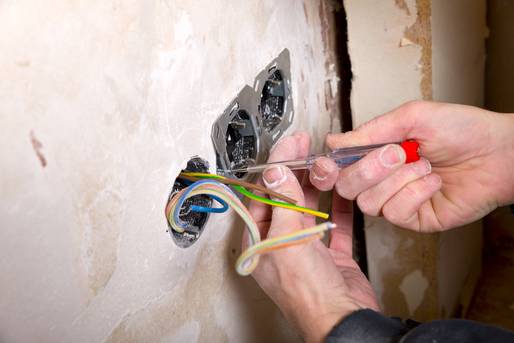Renovate » A beautiful living and working area with little effort
Updated: 24.11.2023 | Reading time: 5 minutes
This text is machine translated.
Whether it's a small two-room apartment or a large detached house, everyone should feel completely comfortable within their own four walls. This is especially true nowadays, when hybrid working is standard and many office tasks can also be carried out from home. However, this is only possible if the furnishings and interior design correspond to the personal wishes and ideas of the respective person.
But even if everything fits perfectly, wall paints, wallpaper and floor coverings visibly wear out over the years. Then it's high time to renovate. Ideally, spring is the best time to do this. Because when the days get brighter again, many people feel the need for a visual change. We are happy to provide you with some interesting information and valuable tips on how you too can make your home or home office area shine in the very best light again.
Renovation is primarily about appearance and not functionality. If the corners of the wallpaper strips are slowly but steadily peeling away from the wall, this is a classic case for renovation. The same applies if the wall paint on the light switches is worn and simply looks unsightly. Or if the wall paint in the office or living room that was very popular years ago now looks rather old-school.
A dripping tap or a faulty light switch are more for the experts. Because in these cases, it's more about repair or maintenance. If, for example, the pipes in the bathroom have to be replaced and the tiles renewed as well as the tap, this is already an extensive renovation.
Renovation work is basically activities and measures that serve to improve the appearance of a home. This is why they are often referred to as cosmetic repairs.
There will certainly be no problems with painting and wallpapering work, as this can be undone if necessary. Drill holes for attaching furnishings to walls and ceilings are also generally not a problem. These can be easily filled and painted over again later. Laminate or carpet can be laid if the existing floor does not have to be removed first. Damage caused by adhesive or fixing should be avoided. Skirting boards can also be fitted.
However, if the tenant no longer likes the tiles in the bathroom or finds the real wood parquet flooring impractical, a replacement should be discussed with the landlord in advance.
Skill and know-how
The most important basic requirement for renovation work is a certain level of craftsmanship. Extensive experience is also very helpful. But this comes almost automatically when cosmetic repairs are carried out. And yes, it's no secret: even with cosmetic repairs, not everything always goes well. A crooked strip of wallpaper that isn't sticking properly or unevenly covering paint is no problem.
What's more, such mishaps can be rectified relatively quickly and easily. However, to avoid unnecessary extra work during renovation, inexperienced DIY enthusiasts should always have an experienced helper at their side. They often know exactly what needs to be done and how to do it.
Suitable tool
To wallpaper an apartment, paint a wall and generally for all craft activities, you need sensible tools that work well. Quality is crucial here. Because if you only use a paint roller every now and then, it should work perfectly so that even inexperienced people can achieve great results.
From a simple folding rule to a special cutter for laminate, the tools required depend very much on the work to be carried out. We will show you exactly what you need based on the activities listed below. We also have some valuable tips for you in the respective areas to ensure that everything goes perfectly when painting, wallpapering and renovating.
Painting work during renovation
Applying a new coat of paint to a wall or ceiling is one of the simpler tasks when renovating. It's easy to do with a little manual skill. In our guide, we explain what you need to bear in mind.
Wallpapering work during renovation
When new wallpaper is to be applied during renovation, some people are quickly overwhelmed. In principle, it's quite simple if you know what to look out for. Our guide tells you how to do it and where the pitfalls are hidden.
Woodwork during renovation
Professionals who work with wood during renovation love working with this fantastic material. Wooden floors and ceilings also convey comfort and warmth. Why not give it a try in an adjoining room?
Electrical work during renovation
Removing a switch cover or socket frame before painting or wallpapering is common practice for many people who renovate frequently. Disconnecting and connecting wires, on the other hand, should only be done by professionals.
In an apartment or house, there is always something to do, to beautify or to renovate. For example, if the wallpaper has become unsightly over time and the corners are slowly peeling away from the wall, you could hire professionals to re-paper the room. However, it is usually difficult to get free appointments with professionals and the costs involved are not insignificant.
However, if you do the renovation yourself, you save time and money. You also gain a lot of practical experience by doing it yourself, which can be put to good use in the next project. However, if you have any doubts about your DIY skills, you should simply get professional help from friends and acquaintances.
When everything from the floor to the walls to the ceiling in a cozy living room or a modern office is perfect, it makes ambitious DIY enthusiasts really proud. And anyone who has discovered the joy of renovation, DIY and embellishment will find plenty of opportunities to put their talent to the test in their home.
Who has to renovate a rented apartment?
According to the German Civil Code, one of the landlord's main obligations is to ensure that a rented apartment is kept in the condition stipulated in the contract. However, the tenant can also be obliged to renovate the apartment under certain conditions. In the case of extensive restoration or renovation work, the landlord is still responsible.
When does a rented apartment have to be renovated?
In most cases, the rental agreement states when an apartment must be renovated. For example, if a renovated apartment has been taken over, the tenant is obliged to renovate the apartment again when they move out. However, this only applies if there is a real need to do so. If the apartment was not renovated when the tenant moved in, the tenant is not obliged to carry out decorative repairs when they move out.
What needs to be done when renovating a rented apartment?
When tenancy law refers to the renovation of an apartment, it means cosmetic repairs. This includes
- Wallpapering walls or ceilings
- Painting or whitewashing walls or ceilings
- Painting radiators, heating pipes and floors
- Painting interior doors or the insides of windows and exterior doors
The actual work required must be clarified with the landlord, as plastic window frames or doors with a plastic coating are not usually painted.
Can the landlord demand regular renovation?
Many tenancy agreements also contain a deadline after which the apartment must be renovated. This provision is inadmissible, as renovation by the tenant is only necessary if there is a real need for it.
What work is a tenant allowed to carry out when renovating their apartment?
Some tenants themselves feel the need to extensively renovate their apartment. However, they are not allowed to simply rebuild everything. They are obliged to return the apartment at the end of the rental period in the same condition as when they moved in. The installed laminate flooring can be removed if necessary and the walls, doors and windows can be repainted to make them look perfect.
However, if the tenant wants extensive refurbishment or changes to the interior fittings, this should be discussed with the landlord in advance. Especially if the refurbishment is desirable from the tenant's point of view, but not absolutely necessary from the landlord's point of view. Our tip: Some tenants then contribute to the costs on a pro rata basis to make it easier for the landlord to decide to renovate.


